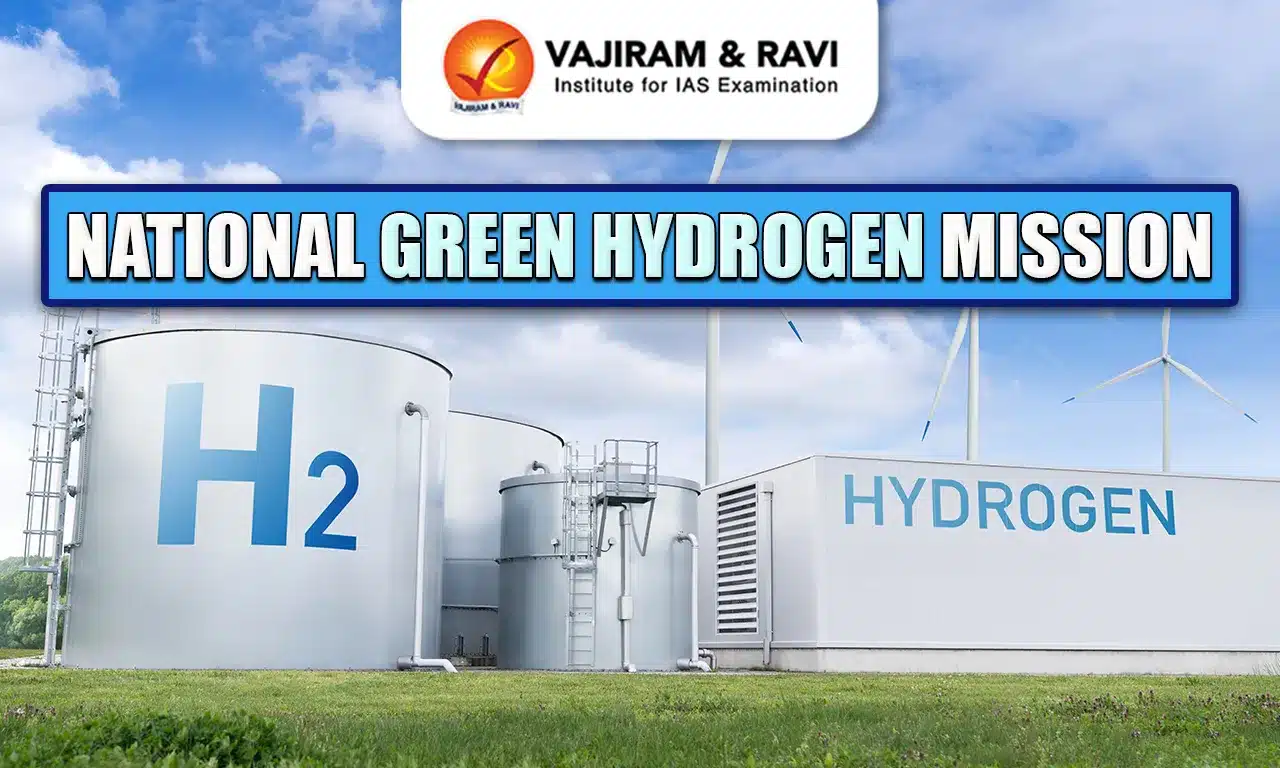About National Green Hydrogen Mission:
- It was approved by the Union Cabinet on January 4, 2023.
- Aim: To make India a Global Hub for the production, utilization, and export of Green Hydrogen and its derivatives.
What are the components of the scheme?
- The Strategic Interventions for Green Hydrogen Transition Programme (SIGHT): Under this two distinct financial incentive mechanisms will be provided
- Targeting domestic manufacturing of electrolysers and
- Production of Green Hydrogen
- The Mission will also support pilot projects in emerging end-use sectors and production pathways.
- Regions capable of supporting large-scale production and/or utilization of Hydrogen will be identified and developed as Green Hydrogen Hubs.
- A public-private partnership framework for R&D (Strategic Hydrogen Innovation Partnership – SHIP) will be facilitated under the Mission.
- A coordinated skill development programme will also be undertaken under the Mission.
Norms issued for funding testing facilities
- The Scheme will be implemented with a total budgetary outlay of Rs. 200 Crores till the financial year 2025-26.
- The National Institute of Solar Energy (NISE) will be the Scheme Implementation agency (SIA).
- The scheme encompasses the development of robust quality and performance testing facilities to ensure quality, sustainability, and safety in GH2 production and trade.
Source: ET
Last updated on January, 2026
→ Check out the latest UPSC Syllabus 2026 here.
→ Join Vajiram & Ravi’s Interview Guidance Programme for expert help to crack your final UPSC stage.
→ UPSC Mains Result 2025 is now out.
→ UPSC Notification 2026 is scheduled to be released on January 14, 2026.
→ UPSC Calendar 2026 has been released.
→ UPSC Prelims 2026 will be conducted on 24th May, 2026 & UPSC Mains 2026 will be conducted on 21st August 2026.
→ The UPSC Selection Process is of 3 stages-Prelims, Mains and Interview.
→ Prepare effectively with Vajiram & Ravi’s UPSC Prelims Test Series 2026 featuring full-length mock tests, detailed solutions, and performance analysis.
→ Enroll in Vajiram & Ravi’s UPSC Mains Test Series 2026 for structured answer writing practice, expert evaluation, and exam-oriented feedback.
→ Join Vajiram & Ravi’s Best UPSC Mentorship Program for personalized guidance, strategy planning, and one-to-one support from experienced mentors.
→ UPSC Result 2024 is released with latest UPSC Marksheet 2024. Check Now!
→ UPSC Toppers List 2024 is released now. Shakti Dubey is UPSC AIR 1 2024 Topper.
→ Also check Best UPSC Coaching in India
National Green Hydrogen Mission FAQs
Q1. What is Green hydrogen?+

















